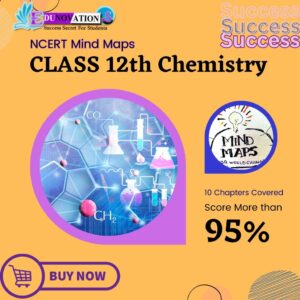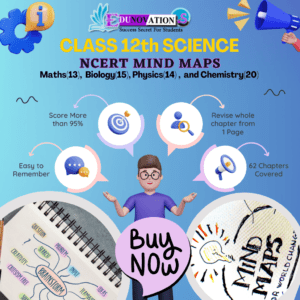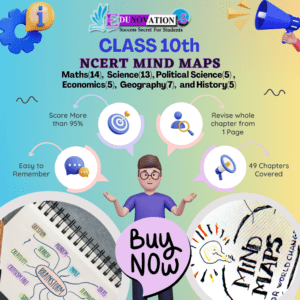Explore key outcomes of the Akhil Bharatiya Shiksha Samagam 2025 NEP 2020 educational review and its impact on India’s academic transformation.
India Celebrates a Transformational Educational Milestone at ABSS 2025
In a significant stride toward shaping a knowledge-driven society, India hosted the Akhil Bharatiya Shiksha Samagam 2025 NEP 2020 educational review, commemorating five years of ambitious educational reforms under the National Education Policy (NEP) 2020. Held on July 29, 2025, this national gathering was organized by the Ministry of Education in collaboration with the University Grants Commission (UGC) and saw the convergence of eminent educationists, policy architects, institutional heads, and academic leaders from across the country.
The Samagam marked a moment of reflection, achievement, and recalibration as India continues to transform its educational ecosystem to align with global standards and indigenous aspirations. Prime Minister Narendra Modi, in a specially broadcasted message, lauded the role of NEP 2020 in democratizing access to quality education and emphasized its centrality to building a Viksit Bharat by 2047.
Toppers Use Mind Maps to score more than 95%
NCERT Class 11th Commerce Mind Maps
Add to cartOriginal price was: ₹999.00.₹199.00Current price is: ₹199.00.NCERT Class 12th Chemistry Mind Maps
Add to cartOriginal price was: ₹199.00.₹75.00Current price is: ₹75.00.NCERT Class 12th Commerce Mind Maps
Add to cartOriginal price was: ₹999.00.₹199.00Current price is: ₹199.00.NCERT Class 12th Science Mind Maps
Add to cartOriginal price was: ₹999.00.₹199.00Current price is: ₹199.00.NCERT Mind Maps For Class 10th
Add to cartOriginal price was: ₹999.00.₹199.00Current price is: ₹199.00.
Purchase Today
A Landmark Review of National Education Policy 2020 Implementation
The core theme of the 2025 Samagam revolved around an in-depth progress under National Education Policy 2020 five year achievements. Launched on July 29, 2020, NEP 2020 aimed to overhaul India’s educational architecture—introducing multidisciplinary learning, vocational integration, technology-enabled education, and academic flexibility.
Over the past five years, more than 1,500 Higher Education Institutions (HEIs) have embraced the NEP framework. These transformations include implementing multidisciplinary curricula, adopting Indian Knowledge Systems (IKS), offering instruction in regional languages, and integrating technology-enhanced pedagogy.
Key achievements highlighted at the Samagam include:
- Over 2 crore Academic Bank of Credit IDs issued
- Curriculum alignment with National Credit Framework
- Expansion of Indian Knowledge Systems in core syllabi
- Launch of 1,200 PM SHRI schools across India
- Enhanced foundational literacy under NIPUN Bharat
For a structured understanding of changes in NCERT curriculum, explore NCERT syllabus, and for teaching aids, check NCERT notes.
Institutional Onboarding and Academic Flexibility with ABC
A notable highlight of the policy implementation was the acceleration of the Academic Bank of Credit ABC onboarding institutions in India. The ABC platform has become a linchpin of academic flexibility by allowing students to accumulate and transfer credits across institutions and disciplines.
As of July 2025, over 2.3 crore students have registered for ABC IDs, with more than 1,800 institutions already onboarded. This approach has empowered students to design personalized learning pathways and promoted lifelong learning.
To complement this shift, learners and educators can explore curated video content on emerging subjects through Edunovations Videos.
Upskilling Educators Through Malaviya Mission Training
Another key area that emerged during the Samagam was the emphasis on teacher capacity building. The Malaviya mission teacher training AI cybersecurity entrepreneurship modules have already impacted over 10 lakh faculty members nationwide. The initiative prioritizes critical 21st-century skills, including AI literacy, cybersecurity protocols, data ethics, and entrepreneurial mindsets.
The Faculty Training Modules under the Malaviya Mission are aligned with the Faculty Development Framework outlined in NEP 2020. Experts at the Samagam also called for more investment in high-quality digital learning content to support these upskilled educators.
Inclusive Schooling with PM SHRI and NIPUN Bharat
The PM SHRI schools NIPUN Bharat foundational literacy numeracy impact has been a pillar of NEP’s school education reforms. Over 1,200 PM SHRI schools have been launched to serve as model institutions, incorporating green infrastructure, smart classrooms, and child-centric learning practices.
Additionally, under the NIPUN Bharat initiative, over 90% of children in Grades 1–3 have now achieved basic proficiency in reading and arithmetic. The Samagam spotlighted state-level innovations like multilingual reading programs, home-based learning kits, and digital tracking tools.
For downloadable educational PDFs and mind maps, visit the Edunovations NCERT resources.
Remarks from Experts and Institutional Leaders
Dr. Mamidala Jagadesh Kumar, Chairman of UGC, emphasized that “NEP 2020 is not just a policy—it is an evolving mission. The Akhil Bharatiya Shiksha Samagam 2025 affirms our collective resolve to build an education system that is inclusive, global in outlook, and local in delivery.”
Similarly, Prof. Anil D. Sahasrabudhe, Chairman of NETF, underlined the need to integrate emerging technologies into curricula while ensuring inclusivity. His comment added momentum to the agenda of expanding digital public infrastructure like SWAYAM and Diksha.
Key Takeaways from the 2025 Samagam
Policy Advancements:
- National Digital University launch expected in 2026
- More than 2500 institutions offering Multidisciplinary Education & Research University (MERU) frameworks
- Comprehensive review of the implementation of the National Curriculum Framework for School Education (NCF-SE)
Foundational Outcomes:
- 9.6 lakh teachers trained in blended teaching techniques
- Bilingual textbooks available in 22 scheduled languages
- Online learning adoption jumped by 78% since 2020
How NEP 2020 Aligns with India’s Future Vision
The progress under NEP 2020 reflects a deeply rooted ambition to drive social equity, economic empowerment, and national growth. The policy continues to foster a unified vision by aligning learning outcomes with employment pathways, citizen responsibilities, and global competencies.
The Akhil Bharatiya Shiksha Samagam 2025 NEP 2020 educational review has become a beacon for policymakers and practitioners working toward building a future-ready India. For insights into daily policy updates, stay current with Edunovations Current Affairs.
Supporting the Digital Education Infrastructure
Entrepreneurs and school administrators looking to build or enhance school websites to align with the digital mandates of NEP can consult Mart India Infotech, a leading web solutions provider for educational institutions.
Moreover, educators seeking quick learning materials and exam prep tools can refer to:
Frequently Asked Questions (FAQs)
1. What is the purpose of the Akhil Bharatiya Shiksha Samagam 2025?
It commemorates five years of NEP 2020 and evaluates its national implementation progress.
2. How many institutions have adopted the Academic Bank of Credit system in 2025?
Over 1,800 institutions have been onboarded under the Academic Bank of Credit.
3. What has been achieved in foundational literacy under NIPUN Bharat?
Over 90% of children in Grades 1–3 have reached basic literacy and numeracy benchmarks.
4. What is the impact of the Malaviya Mission on teacher training?
It has trained over 10 lakh teachers in AI, cybersecurity, entrepreneurship, and pedagogy.
5. How many PM SHRI schools are currently operational?
More than 1,200 PM SHRI schools have been launched to serve as model institutions.
6. What are the five-year achievements under NEP 2020?
Achievements include digital credit systems, teacher upskilling, multilingual education, and increased digital learning.
7. Who attended the Akhil Bharatiya Shiksha Samagam 2025?
Education leaders, UGC and AICTE officials, university VCs, and school administrators attended.
8. What new initiatives are expected in 2026 under NEP?
The National Digital University and expanded SWAYAM offerings are anticipated.
9. How does the Academic Bank of Credit benefit students?
It allows credit portability and flexible, modular learning pathways.
10. Where can teachers find digital resources aligned with NEP 2020?
Teachers can explore NCERT videos and mind maps on Edunovations.














